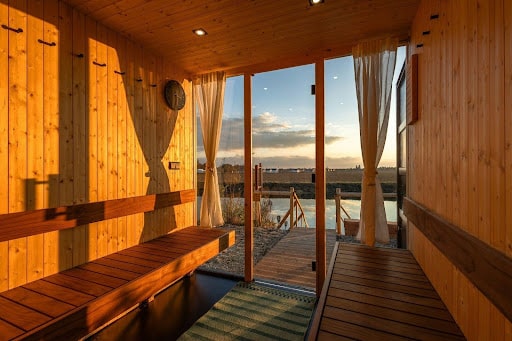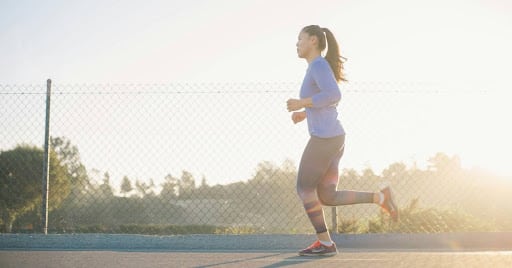Because squats and leg presses work similar muscles it can be tempting to choose one (usually the one you hate least) and skip the other. That might be a bad move. Though they target the same areas, the exercises work together for optimal muscle building and toning.
Squats
 The squat is the workhorse of exercise movements because it calls on muscles of the entire body. Major lower body muscles used in squats include the quads, glutes, and hamstrings. Other muscle groups get a bit of a workout as well because they support the squat when it is executed in proper from. For example, hips, torso, and the abs get in the game. Although squats are generally regarded as a lower body exercise, it is easy to see how some might think of them as total body when the stabilizing efforts of the core are considered.
The squat is the workhorse of exercise movements because it calls on muscles of the entire body. Major lower body muscles used in squats include the quads, glutes, and hamstrings. Other muscle groups get a bit of a workout as well because they support the squat when it is executed in proper from. For example, hips, torso, and the abs get in the game. Although squats are generally regarded as a lower body exercise, it is easy to see how some might think of them as total body when the stabilizing efforts of the core are considered.
How to do a squat: To do a squat correctly begin by standing with feet hip-width apart (that is about enough space for two fisted hands between your feet). Keeping your feet flat and spine straight, place your hands on your hips or extend your arms fully in front of your body from the shoulders, engage your core and lower your bottom as if you were going to sit in a chair. Remember to keep your feet flat and to not extend your knees beyond your feet. Slowly straighten to standing and repeat for desired number of reps.
Squat Pros
Squats have several pros that make them worth doing:
- There are different kinds of squat exercises, so they can be varied to work different muscles or performed from a seated position.
- Squats help strengthen back and core muscles for power development and better athletic performance.
- Posture may improve with squats, thanks to needing to keep the back straight.
- Knee flexibility may improve.
Squats work the whole body and use wider ranges of motion, giving us a healthy workout.
Squat Cons
Some cons may make squats an inappropriate exercise:
- There could be an increased risk of back injuries if we lean too far forward or round our backs during the squat.
- Our shoulders could be strained from holding a heavy barbell during squats.
- We may need a spotter to complete certain kinds of squats.
- Our knees could be injured if our stance is a too-narrow stance or too-wide stance rather than one just wider than the shoulders.
- We could get stuck at the bottom of the squat and be unable to get back up.
Leg Press
 The leg press also works the quads, hamstrings and glutes. But because there is less range of motion than there is with the squat, the quads work harder with this exercise. Although the leg press is a good workout addition, especially if you want to build strong quads, the potential for injury may be greater than with squats. Be sure to get clear instructions from gym staff before you get started.
The leg press also works the quads, hamstrings and glutes. But because there is less range of motion than there is with the squat, the quads work harder with this exercise. Although the leg press is a good workout addition, especially if you want to build strong quads, the potential for injury may be greater than with squats. Be sure to get clear instructions from gym staff before you get started.
How to do a leg press: Sit on the machine and place your feet shoulder-width apart on the platform in front of you. Start with the lowest weight until you are comfortable with the movements. Lower the safety bars and, pushing your feet into the platform, extend your legs fully. Do not lock your knees. Your legs and torso should form a 90 degree angle. Now inhale and slowly lower the platform. Exhale and extend your legs again. Repeat for the desired number of reps.
Squats and leg presses are complementary exercises. Because they work the same muscles (although with different emphasis) it is a good idea to use balance to avoid overtraining. Watch your load with the leg press if you are also planning to do squats. Alternatively, you can perform the exercises on different days. Just be sure you get them both in for optimal muscle toning and building.
Leg Press Pros
Leg presses are performed on a machine and may be better for beginners. Some additional benefits of doing leg presses include:
- the ability to adjust which leg muscles get the extra exercise and emphasis just by changing the foot position
- not needing a spotter to do leg presses
- giving the quads a better workout since there is a shorter range of motion
Leg press exercises are often used to isolate the hamstrings and gluteal muscles, so if we are interested in working these areas, leg presses are a must.
Leg Press Cons
The cons of doing leg press exercises include:
- less emphasis on the hamstrings and glute muscles, so we need additional exercises to hit those regions
- that we could injure our knee joint due to pressing too much weight
- that we could hurt our knees during a knee extension if we lock them when extending the weight on them
- that one leg could get worked harder than the other because the machine moves the same no matter which side is doing the work
- using too much weight and potentially rounding the back
Should I Do Squats or Leg Presses First?
The order doesn’t always matter, but for people who are new to lifting, doing squats first may mean that they have more energy and can do the squats more effectively. For people working on their press strength, leg presses can come first.
Squats and leg presses are complementary exercises, and they often work the same muscles. Some people choose to do them on different days to vary their workouts, or they lower the load on the leg press if they’re also going to do squats.
How Much Should I Leg Press Compared to Squats?
When comparing our leg press weight to our squat weight, we quickly see that we can press more than we can squat.
The reason for this is because, with a leg press, our body is on a slope. The back of the bench takes on some of our weight, so we don’t have to lift that weight as well. That’s why it’s typical to increase the leg press weight up to three times more than what we can do in a squat.
Should I Do Leg Presses or Squats?
Ideally, we’ll do both kinds of exercises. They both work differently and provide varied benefits to the body.
Which Exercise Is Best Suited To You?
Most people can do leg presses or squats equally well, though they may choose to use a leg press machine or other types of machines to maintain balance and posture when they’re learning.
The right exercise for someone will depend on their goals.
Leg presses are isolation exercises, so if we’re hoping to isolate the hamstrings and quads, then that’s the right exercise for us. Squats, on the other hand, work the full body. Squats help work the stabilizing muscles as a compound exercise, meaning that we may see benefits all around the body. For people wanting faster sessions at the gym, choosing squats is the better alternative.
Choose squats for:
- an all-over training program that hits many of the primary muscles and helps with core strength
- to build more muscle mass in the legs and to build a stronger core
- improving core strength after being able to lift heavy loads
- working on the upper body and better posture
Choose to do leg presses if:
- We want to work our gluteal muscles or quadriceps muscles to build muscle mass.
- We want to use lighter weight to work on our leg strength as an isolation exercise.
- We don’t have a strong core. The leg press machine helps keep us in a stabilized position while working out.


